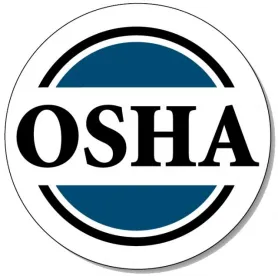The Occupational Safety and Health Administration (OSHA) has published new guidance requiring employers covered by OSHA’s recordkeeping standards to determine whether employees have contracted COVID-19 while at work.
In an effort “to provide certainty to employers and workers,” beginning on May 26, 2020, the agency is requiring all employers to record all COVID-19 cases that:
- Are confirmed by at least one positive test (as defined by the CDC as a respiratory specimen that tested positive for SARS-CoV-2, the virus that causes COVID-19);
- Are work-related; and
- Cause employees to seek medical treatment beyond first aid, result in lost work days or restricted duty or cause loss of consciousness or death.
In an earlier guidance, published on April 10, 2020, the agency recognized the difficulty of determining whether a COVID-19 case was “work-related” due to potential employee infections at home, in the community, or elsewhere. Deciding that employers needed to devote their attention to protective measures (such as disinfecting worksites and implementing proper safety controls), OSHA limited the requirement to make work-related determinations to employers in healthcare industries, emergency response organizations, and correctional institutions. Under that guidance, most employers were exempt from making work-related determinations unless there was reasonably objective evidence reasonably available to the employer of a work-related case. The April 10 guidance will be rescinded on May 26, 2020 and the May 19, 2020 guidance will take effect.
Accordingly, most employers must determine whether employees contracted COVID-19 at work when completing OSHA 300 Logs listing injuries and illnesses. Such logs have become increasingly relevant in recent years because OSHA uses employers’ self-reported data in the logs to publish each workplace’s injury and illness rates on the agency’s website. In accordance with existing regulations, the only employers that are exempt from maintaining such injury and illness records are those with 10 or fewer employees or certain employers in low-hazard industries.
OSHA has directed compliance officers enforcing the new rule to consider a variety of factors in determining compliance, such as:
(1) The reasonableness of the employer’s investigation into work-relatedness;
OSHA has indicated that a reasonable investigation would include the following:
- Asking the employee how he/she believes they contracted COVID-19;
- Discussing, to extent feasible, the employee’s out of work activities; and
- Reviewing the employee’s work environment to consider other related cases.
(2) The evidence available to the employer;
Determinations of whether a case is work-related should be based on evidence reasonably available to the employer at the time the determination is made, but can be changed later when the employer later learns more information that might impact the work-relatedness determination.
(3) And evidence that a COVID-19 illness was contracted at work.
OSHA’s guidance outlines some evidence that may weigh in favor of or against work-relatedness, including:
- Whether there are several cases among workers who are work closely together and there is no alternative explanation (likely work-related);
- Whether an employee contracted COVID-19 shortly after lengthy close exposure to a customer or coworker who has is confirmed positive and there is no alternative explanation (likely work-related);
- Whether the employee’s job duties have them in frequent, close exposure to the general public in an area with ongoing community transmission and there is no alternative explanation (likely work-related);
- Whether the employee is the only worker to contract COVID-19 and the employee’s job duties do not include frequent contact with the public, regardless of community transmission (likely not work-related); and
- Whether the employee, outside of work, has close and frequent contact with family, significant other, friends, (who are not co-workers) who have COVID-19 (likely not work-related).
Because OSHA considers COVID-19 a respiratory illness, it should be coded on the 300 Log as such and if an employee voluntarily requests that their name not be entered into the OSHA 300 Log, the employer must not publish the employee’s name.



 />i
/>i

